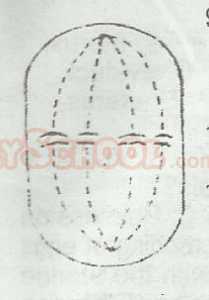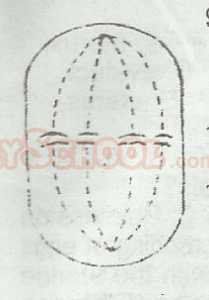Year :
1990
Title :
Biology
Exam :
WASSCE/WAEC MAY/JUNE
Paper 1 | Objectives
1 - 10 of 60 Questions
| # | Question | Ans |
|---|---|---|
| 1. |
Which of the following methods of reproduction is common to Paramecium and Amoeba? A. Conjugation B. Sexual reproduction C. Binary fission D. Budding E. Fragmentation |
C |
| 2. |
Which of the following structures controls the activities of the living cell? A. Nucleus B. Centrosome C. Chloroplast D. Golgi body E. Mitochondrion |
A |
| 3. |
Most of the energy in the cell is produced in the A. mitochondrion B. lysosome C. plastid D. Golgi apparatus E. cytoplasm |
A |
| 4. |
The structure in the cell that controls the movement of substances in and out of the cell is the A. cytoplasmic membrane B. nuclear membrane C. cytoplasm D. protoplasm E. endoplasm |
A |
| 5. |
Which of the following structures differentiates an animal cell from a plant cell? A. Ribosomes B. Cell membrane C. Chloroplast D. Mitochondrion E. Lysosome |
C |
| 6. |
At the end of mitosis the number of cells produced from a parent cell is A. four B. six C. eight D. three E. two |
E |
| 7. |
Which of the following statements is not correct of respiration? A. Gaseous exchange occurs by diffusion B. Oxygen combines with haemoglobin at the respiratory surface C. Carbondioxide produced in the tissues is removed by the process of osmosis D. There are no special organs for respiration in plants E. In higher animals, respiratory gases are transported in solution. |
C |
| 8. |
At which of the following stages of mitosis do the two daughter chromosomes separate completely? A. Early prophase B. Telophase C. Anaphase D. Late prophase E. metaphase |
C |
| 9. |
 Which of the following processes is not evident from the drawing? A. Lining up of the chromosomes at the equatorial plate B. Centromere attaching a pair of chromatids to a spindle fibre C. Chromatids held by centromere D. Absence of nuclear membrane E. Chromatids moving to the poles |
C |
| 10. |
 The stage of mitosis represented in the diagram is known as the A. telophase B. metaphase C. anaphase D. interphase E. prophase |
B |
| 1. |
Which of the following methods of reproduction is common to Paramecium and Amoeba? A. Conjugation B. Sexual reproduction C. Binary fission D. Budding E. Fragmentation |
C |
| 2. |
Which of the following structures controls the activities of the living cell? A. Nucleus B. Centrosome C. Chloroplast D. Golgi body E. Mitochondrion |
A |
| 3. |
Most of the energy in the cell is produced in the A. mitochondrion B. lysosome C. plastid D. Golgi apparatus E. cytoplasm |
A |
| 4. |
The structure in the cell that controls the movement of substances in and out of the cell is the A. cytoplasmic membrane B. nuclear membrane C. cytoplasm D. protoplasm E. endoplasm |
A |
| 5. |
Which of the following structures differentiates an animal cell from a plant cell? A. Ribosomes B. Cell membrane C. Chloroplast D. Mitochondrion E. Lysosome |
C |
| 6. |
At the end of mitosis the number of cells produced from a parent cell is A. four B. six C. eight D. three E. two |
E |
| 7. |
Which of the following statements is not correct of respiration? A. Gaseous exchange occurs by diffusion B. Oxygen combines with haemoglobin at the respiratory surface C. Carbondioxide produced in the tissues is removed by the process of osmosis D. There are no special organs for respiration in plants E. In higher animals, respiratory gases are transported in solution. |
C |
| 8. |
At which of the following stages of mitosis do the two daughter chromosomes separate completely? A. Early prophase B. Telophase C. Anaphase D. Late prophase E. metaphase |
C |
| 9. |
 Which of the following processes is not evident from the drawing? A. Lining up of the chromosomes at the equatorial plate B. Centromere attaching a pair of chromatids to a spindle fibre C. Chromatids held by centromere D. Absence of nuclear membrane E. Chromatids moving to the poles |
C |
| 10. |
 The stage of mitosis represented in the diagram is known as the A. telophase B. metaphase C. anaphase D. interphase E. prophase |
B |